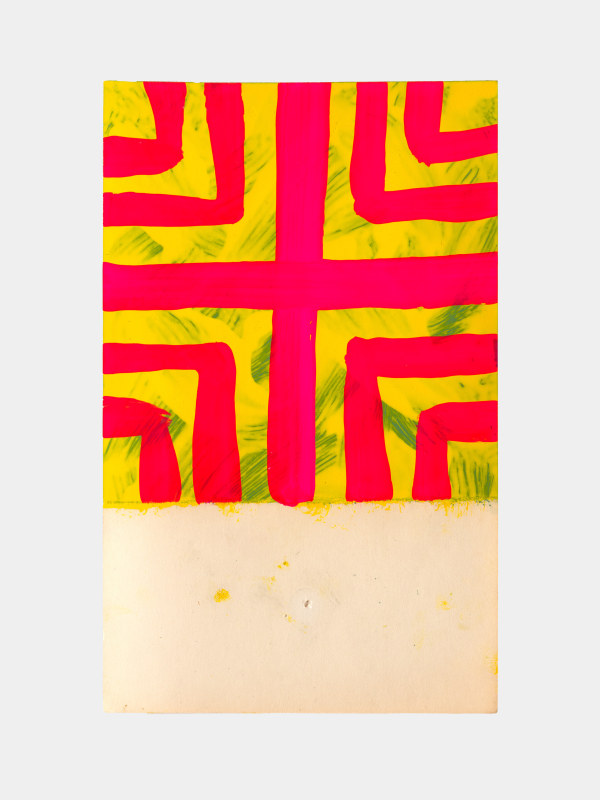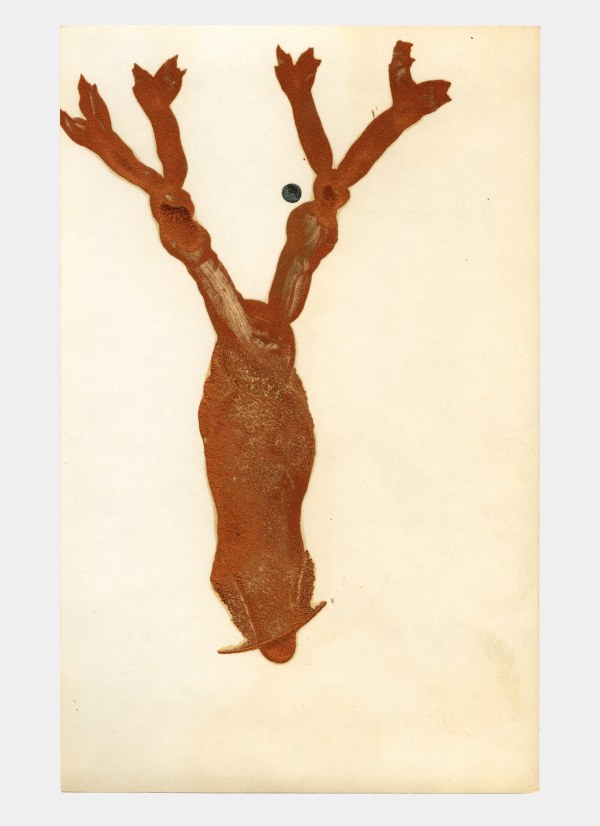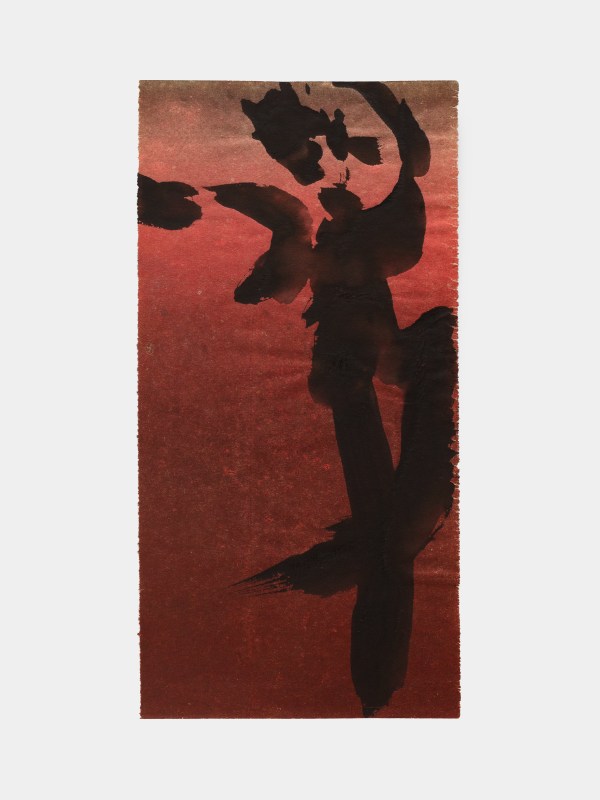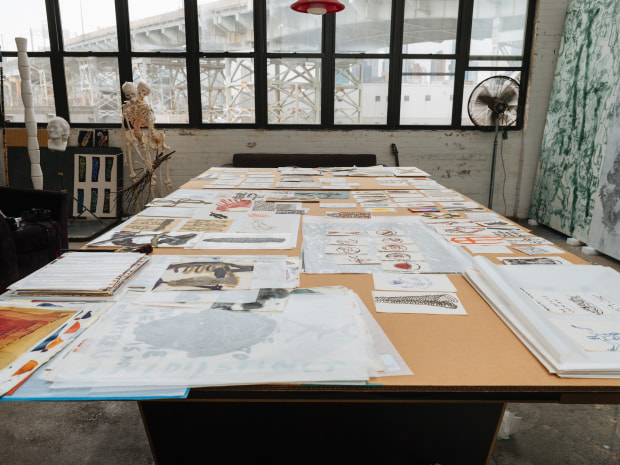NARES TRACES
-
-
Kasmin is thrilled to announce its fifteenth solo exhibition at the gallery of work by multidisciplinary artist Jamie Nares (b. 1953). On view at 297 Tenth Avenue from May 16 through June 22, NARES TRACES will examine over 100 works on paper in a variety of media—namely oil, ink, and enamel—made after refocusing her artistic attention from film to painting in the early 1980s. Coolly perceptive, Nares’ works on paper share the same conceptual focus on movement, rhythm, and measurements of time that has driven the artist’s various bodies of work over the last fifty years. This exhibition points to paper as an essential instrument in Nares’ ongoing exploration of these themes.
Jamie Nares established herself as a fixture among a milieu of avant-garde filmmakers, musicians, and visual artists in downtown New York in the late 1970s, when she co-founded the pioneering New Cinema on Saint Mark’s in 1977 and directed the no wave classic feature film Rome ’78 in 1978. In an effort to expand her artistic achievements, Nares made a conscious decision to redirect her attention to painting in 1982. On an impromptu visit to Egypt with the late critic Edit deAk in 1983, Nares would make her last film before a public hiatus from the medium. She would not shoot another video until 1987 nor another film until 1998. What followed was a sustained, introspective effort to mark con-trolled passages of time in a variety of media, often on paper.
This exhibition affirms the experimental and transitive ethos of Nares’ practice. The subtle dynamism found in the works on view echoes the gentle measures of time and movement that characterize Nares’ return to video in 1987. As works from 1988 indicate, Nares would separate her strokes by their discrete colors, attaching them by the tail ends to give the appearance of a single, continuous multicolor stroke inching across the page. Mirroring the rippling forms that measure sound wave or heart beat frequencies, these works share the same undulating twists found in her iconic single brushstroke paintings of 1992 onwards. Nares’ observable reprisals of distinct themes, gestures, and materials underscore how her various bodies of work find common ground across time and space, traversing the artist’s biographical chronology. -
-
-
-
-
-

-
-
-
-

-
-
-
-
-
-
-

-
-
Nares’ diaristic impulses on paper form a poetic register that touches upon both body and language. In certain cases, Nares defined her figures with mesmerizing linework that appears to slice the body into traces of the artist’s hand motions. Formed through a pattern of concentrated brushstrokes, a pair of hands—an omnipresent motif from the very beginning of Nares’ practice in the 1970s—checks its own pulse in a 1988 oil work, a testament to the rhythmic vigor of the artist’s oeuvre. The pulse—the measure of a beating heart, the metronome of human life—is revisited in one among an intimate series of note cards on view, accompanied by the suffixes “pre- / pro- / pulse.” Created between 1988 and 1992, Nares’ note cards reveal a universe in which her jottings, words and sketches appear together, consistent with the technique Nares employed to draft film scripts in the 1970s. In fragments and phrases, Nares’ writings range from literal descriptions (“helmet w. tuning forks”) to elusive word play (“bull-ette,” near sketches of a small bull’s head and a bullet). Some signal the self-conscious and deeply personal nature of the work, as seen in a depiction of a human figure drinking from a glass accompanied by the words “I am thirsty / my body needs water.”
Stylistically, there is little distinction between the strokes of paint that make up Nares’ words and those that shape her abstract or figural forms, best seen in a 1990s depiction of a human face in oil on wax paper. In a monochromatic palette, the words “THE EYE WANTS TO SLEEP BUT THE HEAD IS NO MATTRESS” are engulfed by the face whose eyes remain wide open. Neither the picture nor the words take precedence over the delicate index of Nares’ gestures. Indicative of the artist’s studies of French poet and painter Henri Michaux in the early 1990s, Nares’ words weave in and out of narrative comprehension, positing the language of movement as essential to her expansive artistic vocabulary. -
-
-
About the Artist
 Photo by Charlie Rubin
Photo by Charlie Rubin -
Join our Newsletter
* denotes required fields
We will process the personal data you have supplied in accordance with our privacy policy (available on request). You can unsubscribe or change your preferences at any time by clicking the link in our emails.
-
Explore
- Diana Al-Hadid
- Alma Allen
- Theodora Allen
- Sara Anstis
- Ali Banisadr
- Tina Barney
- Judith Bernstein
- JB Blunk
- Mattia Bonetti
- William N. Copley
- Cynthia Daignault
- Ian Davenport
- Max Ernst
- Liam Everett
- Leonor Fini
- Barry Flanagan
- Walton Ford
- Jane Freilicher
- vanessa german
- Daniel Gordon
- Alexander Harrison
- Elliott Hundley
- Robert Indiana
- Lee Krasner
- Les Lalanne
- Matvey Levenstein
- Lyn Liu
- Robert Motherwell
- Jamie Nares
- Nengi Omuku
- Robert Polidori
- Jackson Pollock
- Elliott Puckette
- Alexis Ralaivao
- George Rickey
- James Rosenquist
- Mark Ryden
- Jan-Ole Schiemann
- Joel Shapiro
- Bosco Sodi
- Dorothea Tanning
- Naama Tsabar
- Bernar Venet









































